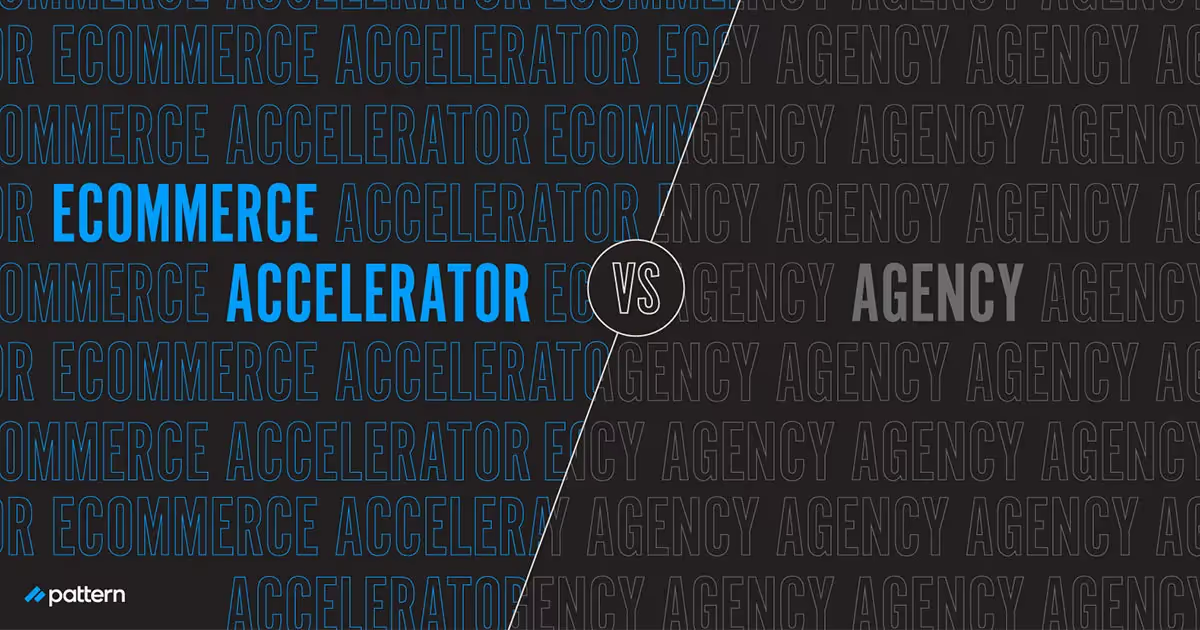How to Get in Control of Your Brand on Ecommerce
Pattern's ecommerce brand control experts discuss how you can take back control of your prices, content, and margin on ecommerce.

Before marketplaces like Amazon became popular, brands were largely shielded from the consequences of channel practices. Brick and mortar stores could set their prices how they wanted and control distribution without many negative impacts. With the advent of online marketplaces platforms, everything changed, and brands were presented with a slew of new challenges. One of those challenges is loss of control over product sales online.
In an October 2019 webinar, industry professionals and experts at Pattern discussed the reasons why brands lose this control and how you as a seller can take it back.
Why do merchants lose control of their brands in online marketplaces?
Unauthorized sellers
John LeBaron, Chief Revenue Officer at Pattern, said unauthorized sellers and “bad actors,” (sellers unwilling to follow the rules) have a serious impact on brand control. One brand Pattern has worked with that carries products in the electronics category had over 1,000 third-party sellers on the marketplace at one point, he said, and as a result, very minimal compliance and high costs. “They were spending about half a million dollars a month in these types of fees back to Best Buy because of the price erosion that they were facing and the price inconsistency on Amazon,” LeBaron said.
These kinds of impacts don’t just affect brands. “It is your distributors, your downline sellers, your resellers that are being affected by some of these bad players as well,” LeBaron said. Denise Zmuda is the Client Success Officer at Vorys eControl, where she helps brands with overall ecommerce practice strategy. Before Vorys, Zmuda was with Zebra Technologies, which worked with traditional channel partners to provide tech solutions and products. She said unauthorized sellers affected their relationship with their partners.
“With the anonymous third-party sellers that had come onto the marketplace and were securing products from gosh knows where, they really put a lot of downward pressure on pricing for the rest of our channel ecosystem, and it became very, very difficult for our more traditional channel partners,” Zmuda said. Zmuda said customers would price compare with third-party sellers and then ask other resellers to match them. In one case, Zebra’s partners identified unauthorized third-parties were selling below their cost. “That was really the impetus behind me saying, ‘enough is enough’,” Zmuda said.
Lack of rules and enforcement
Zmuda said lack of parameters on who could or couldn’t sell Zebra products on marketplaces was a big reason for their loss of control. Another was with the way they enforced MAP. Zebra products weren’t being represented well online—the pricing packages were iffy and the listings and photography were poor. This impacted the reviews of their products’ and reflected negatively on their brand.
What can brands do to regain control?
Regaining control of your brand online can feel daunting, especially when there are lots of bad actors causing problems. There are some “shockingly easy” and creative things brands can do to regain control in the short-term, however.
Product modification and differentiation
Reach Logistics was selling a restoration kit users apply to a headlight to clean it. Due to the number of unauthorized resellers selling their kit, they were unable to get control of their product, so they made it a different product. “Simply, we added a latex glove that you use to apply the product, and that automatically takes that item and turns it into a new ASIN or listing,” Zech Hintz said. “All of a sudden, you have this product that no one really in the market has.”
Zmuda said Zebra took this approach for their brand as well, developing unique material differences in their products. Hintz said unauthorized sellers won’t take the time to do differentials such as bundling products, adding a polybag, or a stamp of quality, which puts you in a good place to regain control of your product. “If you just throw a little bit of ad dollars behind that, all of a sudden you’ve got your new listing that’s outperforming the previous one, and you’re basically killing the opportunity for anyone to sell on it,” Hintz said.
Selective distribution and quality control policies
According to George Hatch, Director of Marketplaces at Pattern, one of the more serious steps brands may need to take to regain control of their brand online is reassess their distribution agreements and see where they can become more selective. “Brands need to figure out how to get their arms around distribution agreements, who’s allowed to sell where and when, and really create a playbook, in essence, as to who controls how the brand rolls out and who has authorization,” Hatch said.
One of the ways Zebra regained control was to consult with a legal team and enact quality control policies that allowed them to distinguish between authorized sellers of their product and those they didn’t know anything about. Zebra also picked a single authorized third-party seller. “I’m a firm believer that for a particular category of product, you should have one seller, otherwise right out of the gate, you’re very over-distributed and sort of competing amongst yourself by having multiple sellers on such a vertical marketplace,” Zmuda said.
Challenges you might face
Cleaning up your market space can create some challenges. You may need to have difficult conversations with channel partners and even cut them off. “We have brands that we work with that have some of their largest distributors that were leaking product and breaking some of their agreements, and so they made the hard decision to cut them off for 90 days,” Hintz said. Though that experience wasn’t pleasant for the brand, it cleaned up 50% of the marketplace immediately. “It’s hard to quantify at first, because it looks like a loss, but I think when you do the math correctly, in the sense that you’re looking at the bigger picture and what you’re actually losing, a sense of eroded prices or slender markets, you’re probably going to have a bigger win,” Hintz said.
How to begin
Zmuda said one of the first steps to implement changes is educate stakeholders on what’s happening so they see the problem. Zebra worked with an expert who pulled data on their company to show them what was happening. They learned from that data that they had 250 plus sellers representing their product who they’d never heard of before or who were selling their product anonymously. From that point, they were able to proceed with regaining control.
Brands like Pattern can supply buyers with the information they need to start regaining control of their brand. This includes details like how much of the Buy Box you’re losing, who you’re losing to, which third-party unauthorized sellers are undercutting your business, and where they’re getting profit. To learn more about how you can take back brand control, contact us.






